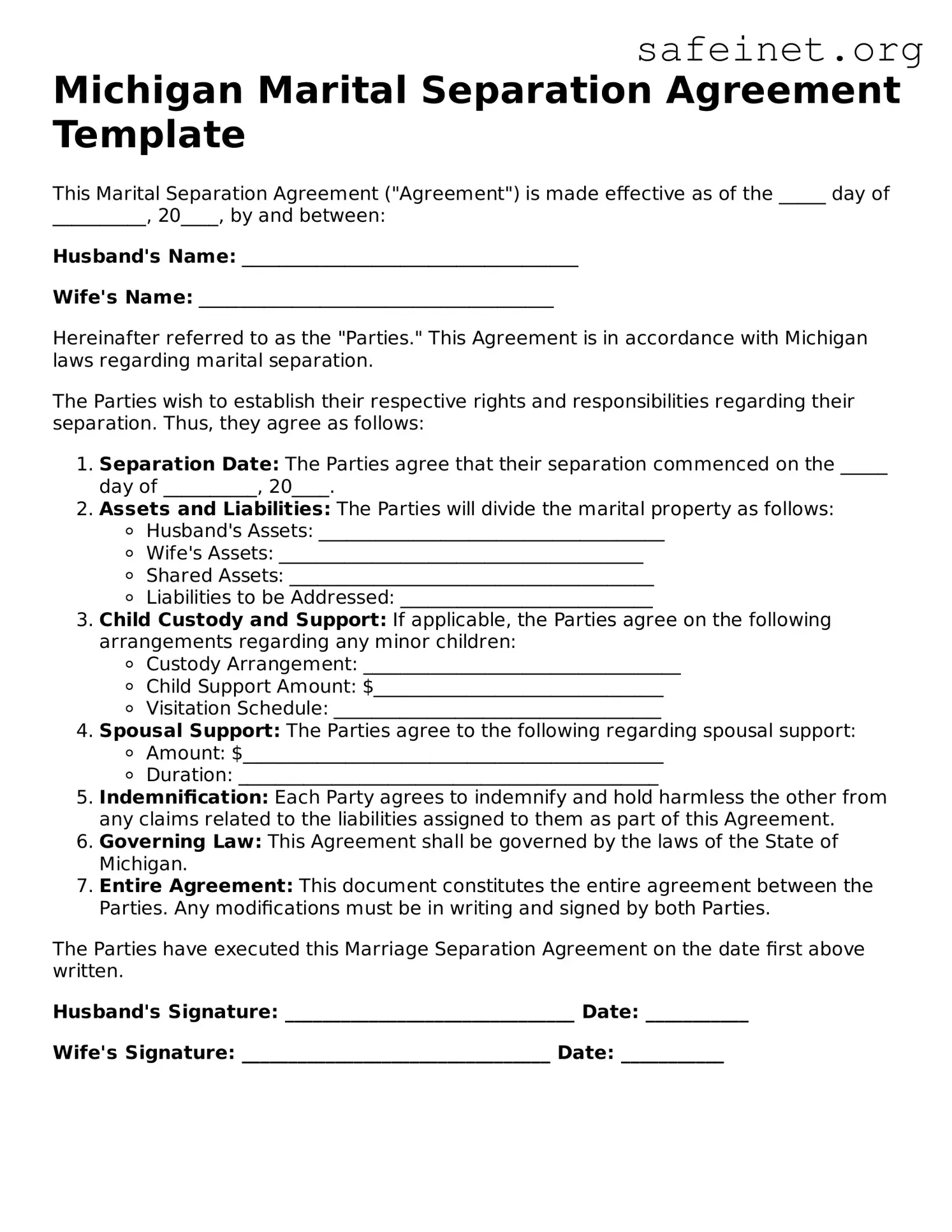The Michigan Marital Separation Agreement is similar to a divorce settlement agreement, as both documents outline the terms and conditions agreed upon by spouses regarding the division of assets, debts, and responsibilities. In a divorce settlement agreement, the arrangements regarding child custody and support, visitation rights, and alimony payments are also addressed. Both documents require thoughtful negotiation to ensure fairness and clarity for both parties, though the divorce settlement is more final as it concludes the marriage legally.
Another similar document is the postnuptial agreement. This agreement, created after the marriage has commenced, binds spouses to specific arrangements concerning property and support, similar to the marital separation agreement. While a marital separation agreement dictates temporary arrangements during a separation period, the postnuptial agreement addresses long-term financial matters and can serve as a way of circumventing potential disputes should the marriage fail.
The separation and property settlement agreement share similarities with the Michigan Marital Separation Agreement in that both outline how a couple's assets and liabilities will be divided. This document is typically used during the divorce process or in the event of a legal separation. The property settlement agreement, however, is broader and may include stipulations about property maintenance, debts, and other financial responsibilities, aiming to prevent conflicts arising from the division of shared resources.
A parenting plan is essential for separated or divorced couples with children, akin to aspects of the marital separation agreement. This document articulates the custody arrangements, parenting schedules, and decision-making responsibilities for the children's upbringing. While the marital separation agreement addresses the needs of the spouses, the parenting plan focuses specifically on the welfare of the children, ensuring their needs are at the forefront.
The temporary custody agreement serves a similar purpose, as it provides immediate arrangements regarding child custody during the separation period. Both documents prioritize the children's needs, but a temporary custody agreement is specifically short-term, often used until a more permanent solution is reached during divorce proceedings or legal separation.
A financial affidavit may also resemble the Michigan Marital Separation Agreement, as it requires both parties to disclose their financial situations, including income, expenses, and assets. While the separation agreement details the division of these financial elements, the financial affidavit serves as a transparent declaration, allowing both parties to have an accurate understanding of their respective financial standings, which influences negotiations.
Another document related to the Michigan Marital Separation Agreement is the divorce decree. This final legal document reflects the court's approval of the divorce settlement reached by the couple. The separation agreement typically lays the groundwork for terms that may be incorporated into the divorce decree, ensuring that all marital matters are formally executed and recognized by the court.
Lastly, a marital settlement agreement is similar in function to the Michigan Marital Separation Agreement. Both documents aim to establish the distribution of assets, debts, and responsibilities, and they often include terms about child custody and support. While commonly used in divorce cases, a marital settlement agreement can serve as a preliminary strategy for couples contemplating separation, outlining their intentions should they choose to proceed with a divorce.
